'I'll keep painting as long as I'm alive,' Madhvi Parekh, one of India's most influential painters, tells P Rajendran in New York.
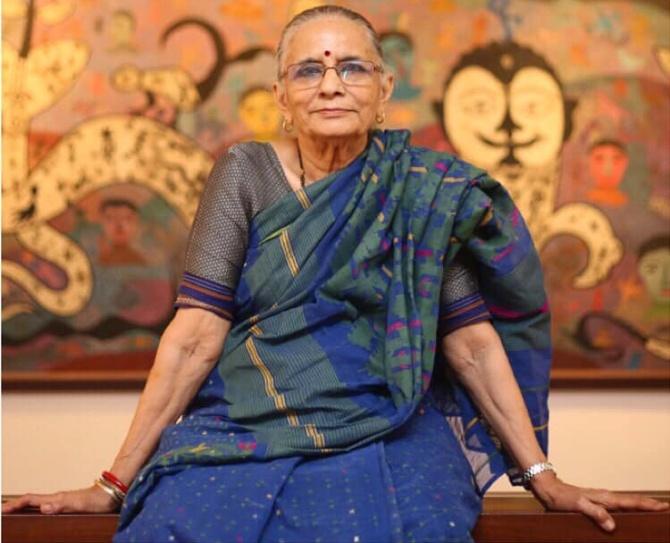
Madhvi, a village girl from Sanjaya in Gujarat, was just 15 when she was married to Manu, a budding artist not much older than her at 18.
Sixty-two years on, Madhvi Parekh marked 50 years of her artistic career with a solo exhibition at the Delhi Art Gallery in New York.
Madhvi Parekh is feted in India for her curious amalgam of traditional and modern art. Her early tentative works slowly gave way to more complex themes, including, most recently, her own recreation of Da Vinci's Last Supper. In fact, the exhibition is titled The Curious Seeker, an assertion of her restless desire to try new things.
Madhvi had no artistic pretensions when she married Manu, an artist still to graduate from the well-known J J School of Art in Mumbai.
She finished her schooling at her parents's home, still imbibing tales from the Mahabharata from her father, a Gandhian and a school teacher.
Madhvi described her earliest foray into art as being limited to the rangoli with which she used to decorate the threshold of her parental home on Diwali.
She liked the rural landscapes, the sunsets and the rainbows of Sanjaya, but painting was beyond her ken.
She joined her husband in Ahmedabad and they then headed for Mumbai (then Bombay), where she trained as a Montessori teacher. Young and preternaturally restless during her pregnancy, she told her husband she, too, wanted to paint.
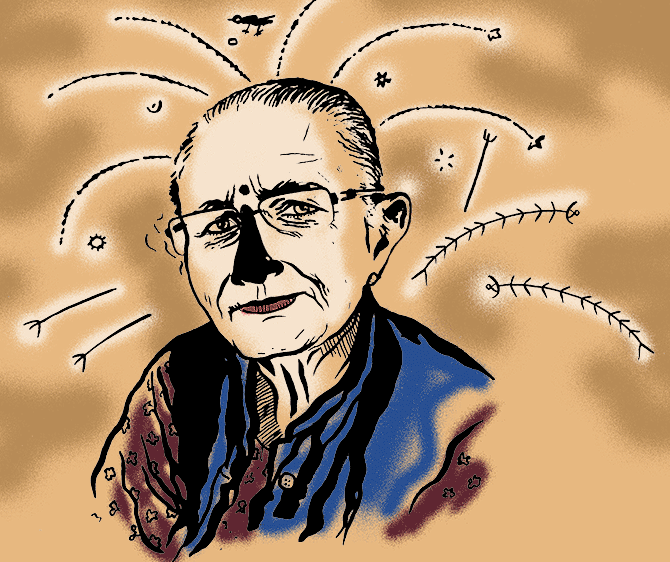
Speaking from the little experience he had then, Manu spent a week dissuading her, pointing out that art was not as easy as it seemed -- that it took dedication and exhaustive effort, with no certainty of reward in the form of fame or fortune.
But Madhvi persisted -- and Manu crumbled before the irresistible force that was his wife.
Madhvi said Manu started her on simple forms -- triangles, squares, circles -- and asked to her to keep repeating them.
The circles soon morphed into faces, the squares into torsos and limbs. Soon, drawing from the art in the Swaminarayan temple near her parents's home, her painting gained in complexity.
She was much taken up by the art of Paul Klee, and as Manu taught her the basics, she found elements of Klee and other new influences, including her father's stories, creeping into her own work.
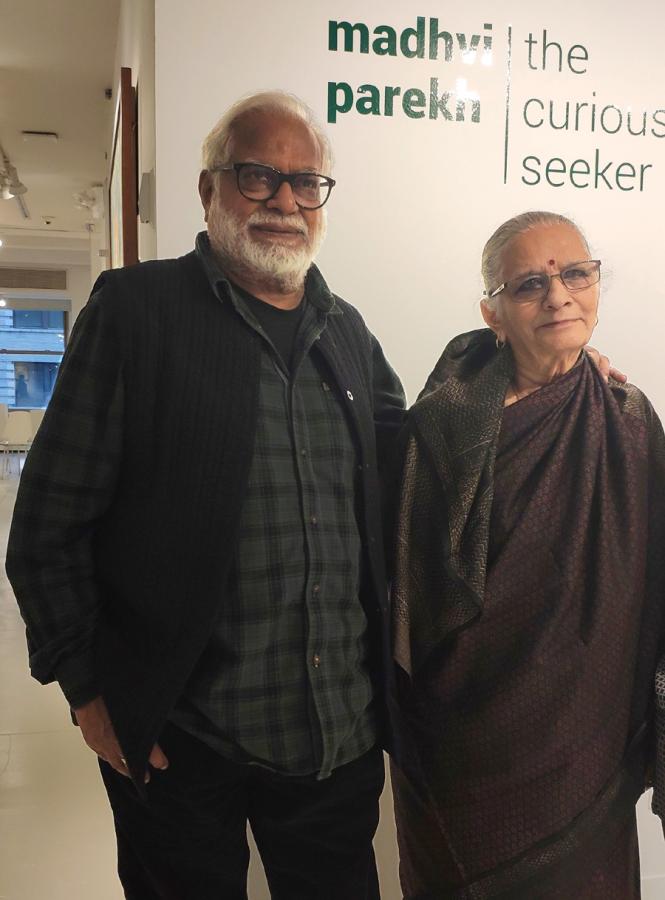
As she learned, her own style emerged, distinct from that of Manu, Klee or any other artist. Her early palette, often richly colored, became more muted, allowing for tertiary shades and tints, and exploring less obvious themes.
"I could not imagine that such ideas could come from her," Manu said, describing his wife's work.
"She's a modern contemporary painter from a rural sensibility," Manu said. "After Jamini Roy (a famous artist who drew inspiration from local and tribal art) there was a big gap (in the use of folk themes in art)." It was used in theatre, film, music, songwriting, but not in painting, he said.
Always the more voluble of the two, he described how he often emerged from his studio to express the joys or frustrations he had experienced. But Madhvi remained quiet and inscrutable, hardly discussing the ups and downs of her own day.
"If I come from outside, first I go to her studio. If she works three hours in her studio and comes out, I will not know what she did," Manu said, describing their contrasting natures. "I am expressive and excited. If I do good work, I'll tell her; if my work isn't good, I'll show my depression, too."
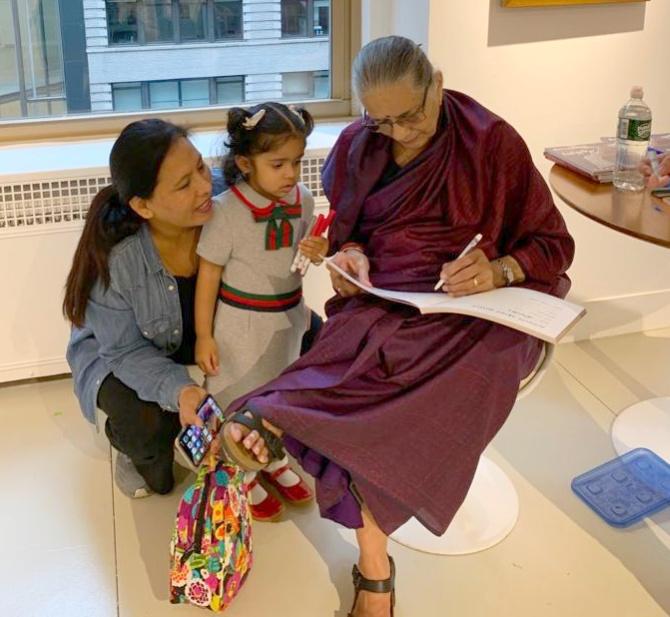
According to Manu, one thing she was firm about was that she would not have a workspace too far from the home fires.
"She demanded that her studio could be small but should be on the same level as the kitchen," Manu said. His own bigger workspace is in the basement of the house.
When the family moved to Kolkata (then Calcutta) around 1965, Madhvi painted when the children were at school, drifting from kitchen to her easel and back, methodically managing her creative and homemaking skills.
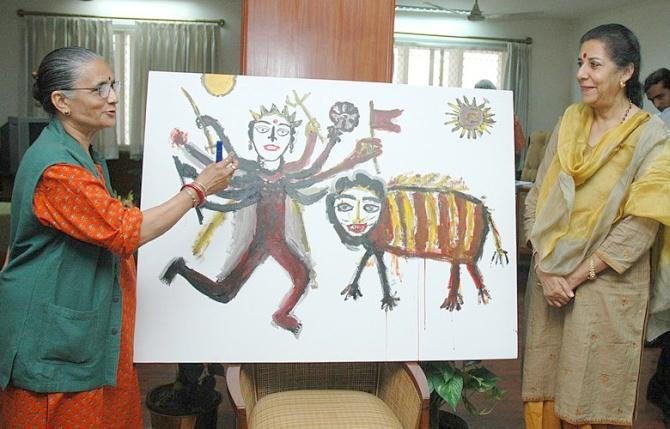
Describing Madhvi's nature, Manu fell back on his experiences working with rural artists at the Weaver Service Center in Kolkata: "I saw that the women from the rural belt were very powerful. Madhvi is one of them. A powerful woman is good company, not a threat."
Married May 8, 1958, the couple have completed 61 years of marriage.
They did ensure some tough times, Manu said, describing the struggle till he found commercial success at the age of 65 (He is now 80).
But Kolkata was good for Madhvi, who loved the pageantry of the Durga Puja, which influenced her to paint Kali often. One of her larger works hangs now in the National Art Gallery in New Delhi.

In the seventies, Madhvi's ever-changing paintings drew on more ideas, especially after the family moved to New Delhi in 1975.
There she came in contact with influential painters like Vivan Sundaram, the nephew of famed painter Amrita Shergill, and slowly her work began to be seen as novel, even edgy.
Madhvi said she always seeds one message in most of her paintings.
"Those who do hard work will always be successful," she said, asserting that influence came from her god-fearing father's aphorisms: "Work hard. Don't lie." She added that the messages are the same in the Gita and the Bible.
She pointed out to the dancers and musicians in one painting, saying it took a lot of daily effort for them to perfect their own art.
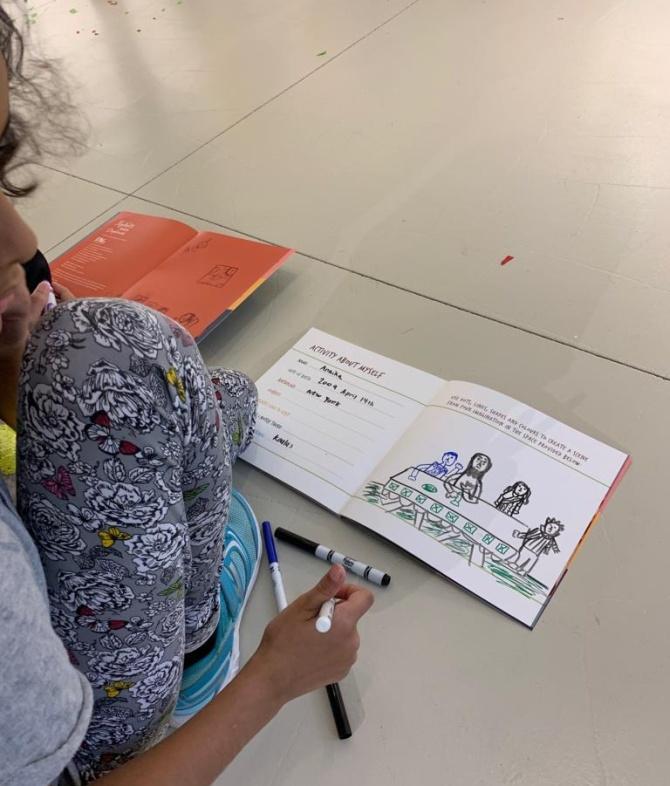
Disturbed after her visit to the Holocaust Museum in Jerusalem, Madhvi had gone to a church nearby where she was calmed by the serene expression in a statue of Jesus. She decided she, too, had to use Jesus in her paintings.
In the Last Supper, her own 2011 variation of Da Vinci's painting, Madhvi said the mudra -- or pose -- affected by the characters in the painting foreshadow the betrayal of Jesus.
What are her future plans? She has some plans to focus on smaller watercolors.
"I'll keep working," she said. "What else? I'll keep painting as long as I'm alive."
The Curious Seeker runs till October 27 at the Delhi Art Gallery in New York.










